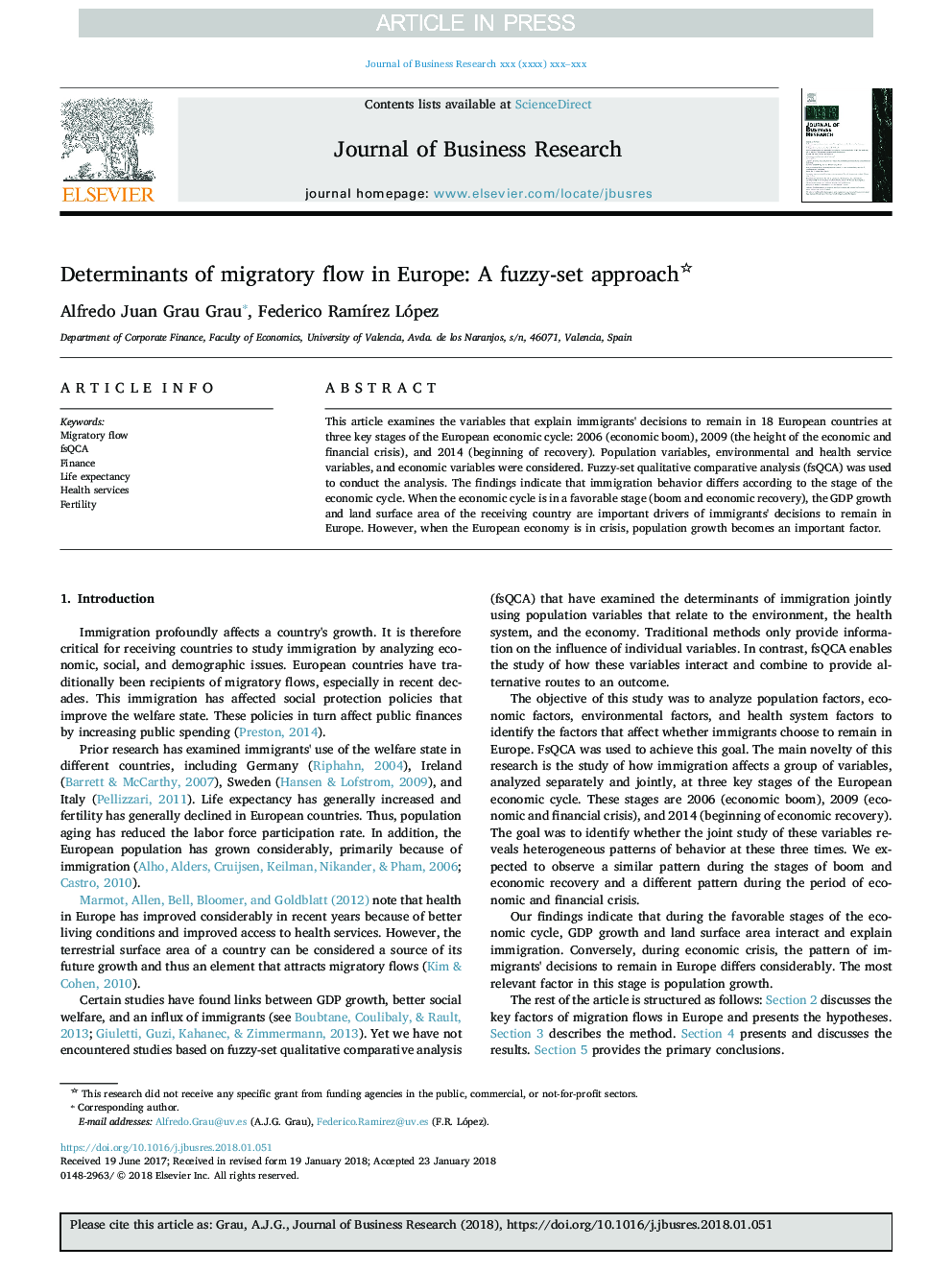| Article ID | Journal | Published Year | Pages | File Type |
|---|---|---|---|---|
| 7424898 | Journal of Business Research | 2018 | 8 Pages |
Abstract
This article examines the variables that explain immigrants' decisions to remain in 18 European countries at three key stages of the European economic cycle: 2006 (economic boom), 2009 (the height of the economic and financial crisis), and 2014 (beginning of recovery). Population variables, environmental and health service variables, and economic variables were considered. Fuzzy-set qualitative comparative analysis (fsQCA) was used to conduct the analysis. The findings indicate that immigration behavior differs according to the stage of the economic cycle. When the economic cycle is in a favorable stage (boom and economic recovery), the GDP growth and land surface area of the receiving country are important drivers of immigrants' decisions to remain in Europe. However, when the European economy is in crisis, population growth becomes an important factor.
Related Topics
Social Sciences and Humanities
Business, Management and Accounting
Business and International Management
Authors
Alfredo Juan Grau Grau, Federico RamÃrez López,
